1. Test Your Water Pressure
Get a water pressure gauge, available online for around $10. Make sure all faucets are off and appliances that use water, like your washing machine or dishwasher, aren't running. Attach the gauge to a hose faucet with a hose connection. Read the gauge. You should aim for around 60 psi. Anything below 50 psi might indicate a problem, and anything above 80 psi could indicate excessive pressure, which is an issue too.
This simple test can tell you a lot about your water system. If your pressure is within the acceptable range but you're experiencing low pressure, there could be another issue at play. Regularly monitoring this can help you catch problems early, ensuring your home maintains strong water pressure.
2. Check with Neighbors
If you've conducted the water pressure test and found your pressure lacking, the next logical step is to seek answers from your neighbors. Asking if they are experiencing the same low water pressure issues can be quite revealing. These conversations can be effective in pinpointing the root cause of the problem.
If your neighbors are also dealing with water pressure woes, the issue might lie within the municipal water supply, not just your home. This shared problem can sometimes be due to maintenance work or issues with the main water supply line, and knowing this can save you unnecessary troubleshooting within your own property. On the flip side, if your neighbors have strong, consistent water pressure, it's more likely that the problem is specific to your home's plumbing system.
This approach helps address your water pressure problems more efficiently and builds a stronger sense of community. It shows you're not alone in tackling household issues and that mutual support can simplify even the smallest of problems.

3. Inspect for Clogs
Sometimes, low water pressure can be attributed to something as straightforward as clogged pipes. Over time, minerals in your water can build up inside your plumbing, narrowing the pipe diameter and restricting water flow. This can be especially problematic in older homes. In many cases, you can address a clog without too much hassle.
For a quick fix, start with your faucets and showerheads. Mineral buildup can often be dissolved by soaking these fixtures in vinegar overnight.
- Remove the aerator or showerhead.
- Submerge them in a vinegar-filled container.
- Let the vinegar do its magic.
- After a good soak, scrub any remaining debris with a small brush.
You might notice a significant improvement in water flow.
For more stubborn clogs deeper within your plumbing system, it might be worth calling in a professional plumber. They have the necessary tools and expertise to inspect and clean clogged pipes safely and efficiently, possibly using hydro jetting or other specialized techniques. Regular maintenance and prompt attention to clogs can keep your water pressure strong and prevent more serious plumbing issues down the road.
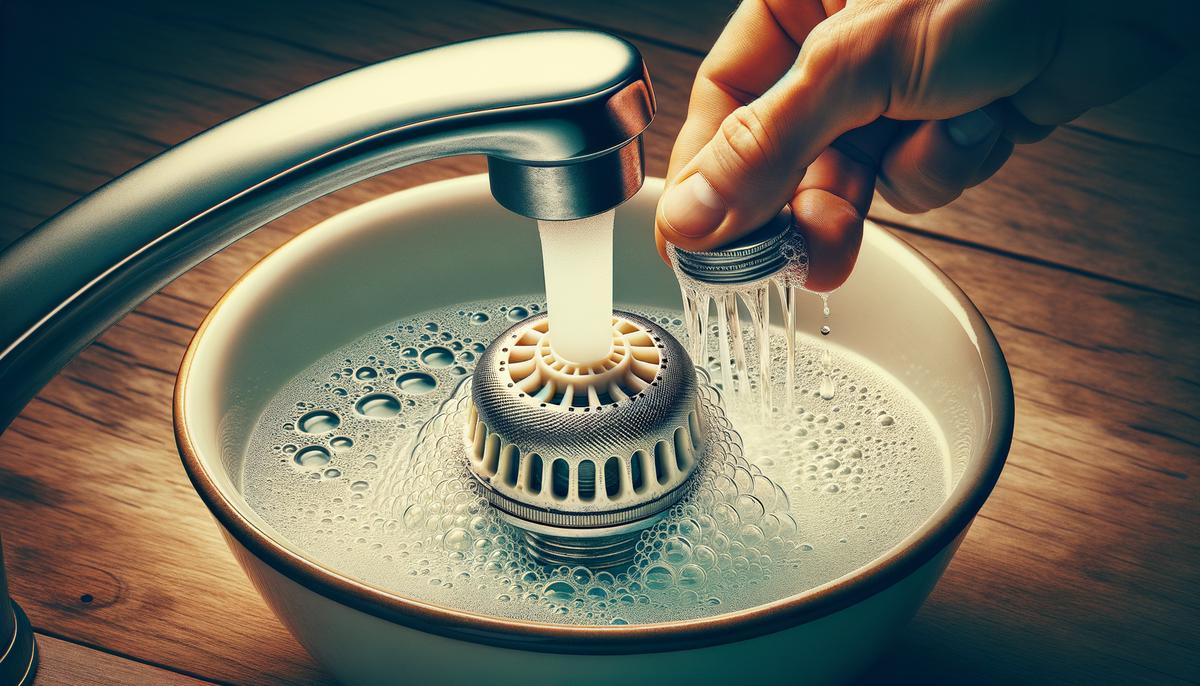
4. Examine Valves
Your home's water flow is controlled by a main shutoff valve, typically located near the water meter. This valve can be partially closed for various reasons—perhaps a plumber didn't fully reopen it during the last repair, or it might have been adjusted inadvertently. Ensuring this valve is fully open might resolve low water pressure issues.
To check the valve, locate it near the water meter, often found in your basement or utility area. Look for the valve lever and make sure it is turned completely counterclockwise. This ensures maximum water flow into your system. If it's not fully open, adjusting it could make a noticeable difference in your water pressure. Just be careful not to force it, as that could cause damage or further issues.
If adjusting the valve doesn't fix the problem, there might be another issue causing low pressure, necessitating further investigation. This step, however, is quick and straightforward—always worth checking before moving on to more complicated solutions.
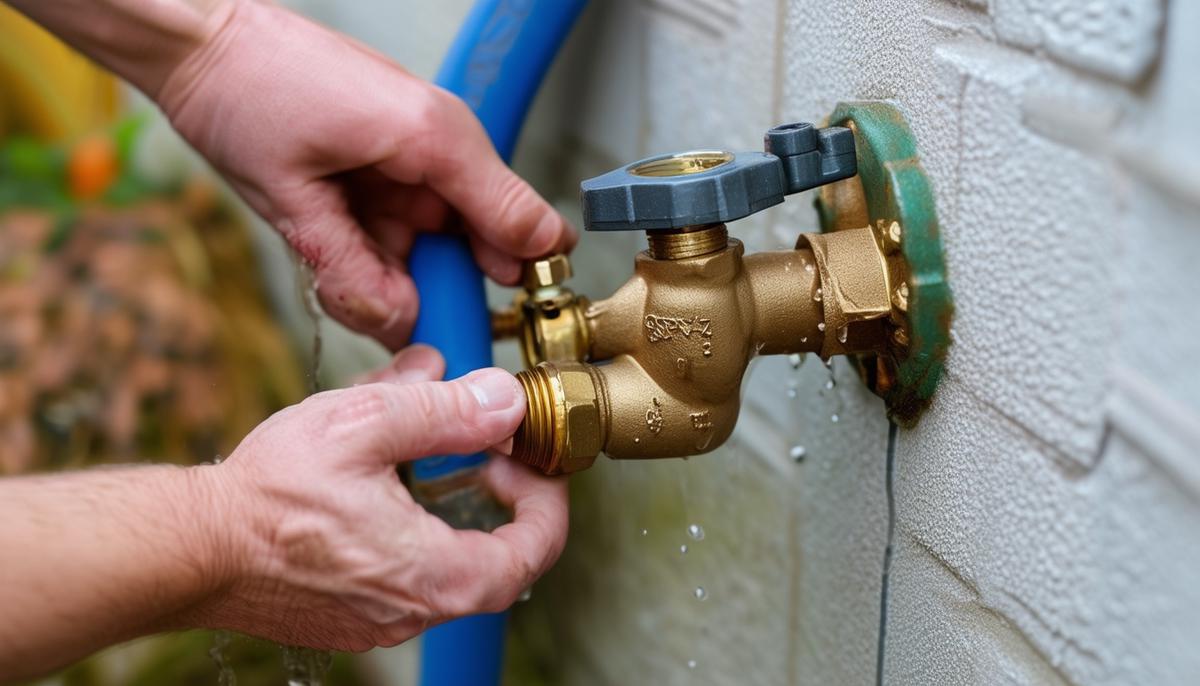
5. Look for Leaks
Even a small leak in your plumbing system can lead to significant drops in water pressure. Leaks waste water and reduce the force with which it reaches your faucets and showerheads. Identifying and fixing these leaks can help restore your water pressure to its proper level.
To detect a leak:
- Turn off all faucets and water-using appliances in your home.
- Take a reading from your water meter.
- Wait a few hours without using any water.
- Check the meter again.
If the meter reading has changed, you likely have a leak somewhere in your system.
Leaks can occur in various locations—from obvious spots like dripping faucets to hidden areas within walls or under flooring. Some leaks are easy to spot, while others may require professional detection methods. If you suspect a leak but can't seem to locate it, calling a professional plumber to perform a thorough inspection is advisable. They can use specialized equipment to pinpoint the leak and repair it, ensuring your water pressure remains strong—and your home stays dry and safe.
6. Replace or Adjust the Regulator
One often overlooked yet crucial component of your plumbing system is the water pressure regulator. This small but significant device ensures that the water pressure entering your home remains at a safe and consistent level, generally between 45 and 60 psi.
A malfunctioning water pressure regulator can cause a noticeable drop in water pressure or, conversely, an unwanted increase, both of which can lead to various plumbing issues. The regulator usually resembles a small bell-shaped valve near your water meter or shutoff valve.
If you suspect the regulator might be the culprit behind your low water pressure, there are a few steps you can take:
First, observe the water pressure reading from your earlier tests. If it falls significantly below 45 psi or shoots above 80 psi, it's a strong indicator that your regulator may need attention.
Next, while you might be tempted to tackle the adjustment yourself, it's best to hire a professional plumber. Adjusting the regulator involves precise manipulation that requires specialized knowledge and tools, and improper adjustments can lead to more significant problems. A licensed plumber can accurately diagnose whether the issue is with the regulator or something else in your system and make the necessary adjustments or replacements efficiently.
In some cases, especially with older homes, you may discover that your plumbing system doesn't have a regulator at all. This scenario calls for a professional installation. Although it's an added expense, installing a regulator is a worthwhile investment. It not only helps maintain steady water pressure but also extends the lifespan of your home's plumbing system by preventing damage caused by both high pressure and low pressure1.
Regulator issues are sometimes intertwined with other plumbing problems, so while the expert is on site, it's a good idea to have them do a general check-up on your whole system. This proactive approach can help identify and fix potential issues before they escalate, ensuring your home maintains optimal water pressure and reliable plumbing health.

7. Use a Booster Pump
Installing a water pressure booster pump can significantly improve your home's water pressure. This added solution is especially valuable for homes located at higher elevations or at the end of a supply line, where water has a longer distance to travel and might lose pressure along the way.
A booster pump functions by increasing the pressure and flow rate of the water entering your home. It acts almost like a mini water tower, pushing the water through your pipes with the additional force needed to reach every faucet and fixture optimally. Here's how you can decide if a booster pump is right for you and how it can make a difference:
First, consider the lay of your land. If your house is on a hill or far from the municipal supply, you're likely dealing with naturally lower pressure. A booster pump can provide the extra push needed to bring in water at a desirable pressure.
Second, check your existing water pressure. If your pressure gauge reads consistently below 40 psi despite all the troubleshooting, a booster pump might be your best bet. It can elevate the pressure to a more efficient and pleasant level, typically around 50-60 psi.
Installing a booster pump is not typically a DIY project unless you have solid plumbing skills. The installation involves cutting into your main water supply line and integrating the pump system securely. It's advisable to hire a professional plumber to ensure everything is set up correctly and to avoid any potential water damage or system failures.
Booster pumps come in various sizes and capacities, so consult with your installer to select one that suits your home's needs. Some units come with adjustable settings, allowing you to fine-tune the pressure to your preference. While the initial cost—ranging from $400 to over $1,000—along with installation fees, may seem significant, the benefits often outweigh these expenses. Enhanced water pressure not only improves daily chores but also extends the life of your appliances by ensuring they operate within optimal conditions.
Additionally, a booster pump can improve the effectiveness of fixtures and appliances that rely on steady water pressure. Think faster shower fillings, more powerful dishwasher cycles, and efficient washing machine loads—the convenience and efficiency can transform your household routines.
Lastly, be mindful of the ongoing maintenance. Regular checks and servicing ensure that your booster pump remains in good condition, providing reliable performance for years to come. Clean filters regularly and monitor the pump's operation to preemptively address minor issues before they escalate.
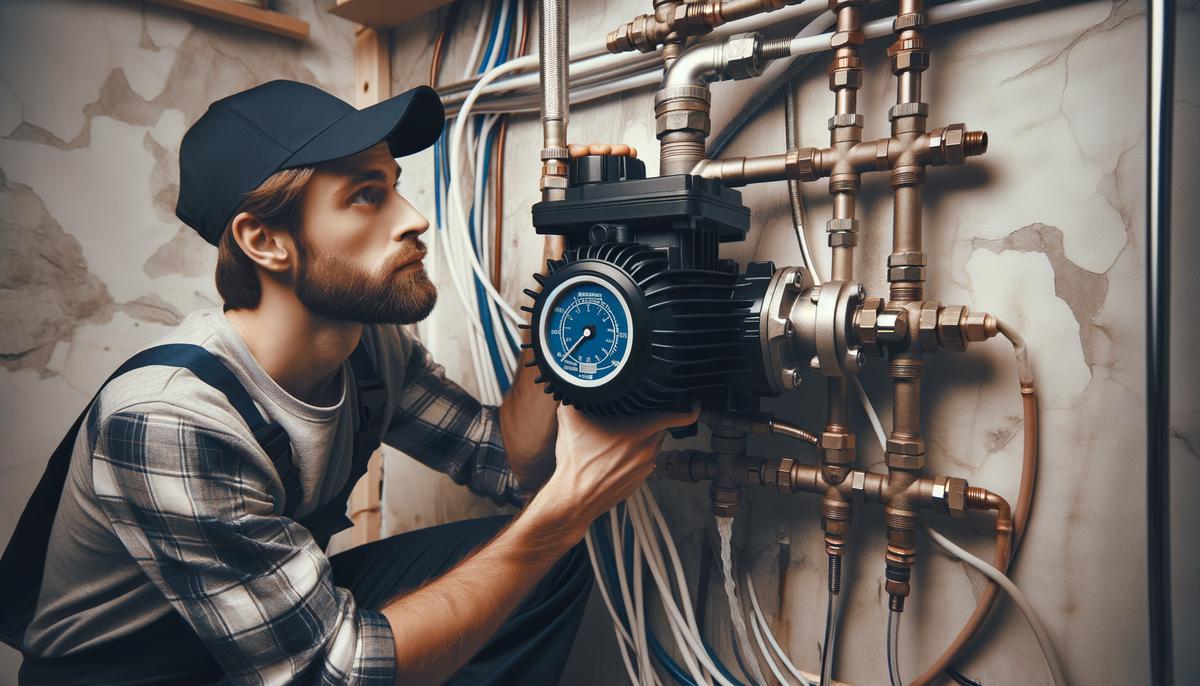
8. Contact Your Local Water Department
If your persistent water pressure problems have left you scratching your head after running through all the usual troubleshooting steps, it's time to call in the experts: your local water department. This step is crucial, as sometimes the issue isn't localized to your home's plumbing but could originate from the municipal water supply itself.
- Reach Out: Start by giving your local water department a call. Most municipalities have a dedicated helpline for residents experiencing water supply issues. Explain the problem in detail, including any testing you've conducted, and inquire if they can assist in diagnosing the issue.
- Public Water Line Tests: Many water departments offer services where they test the water pressure right at the main supply line that enters your property. This test can determine if the problem lies with the public supply or if it's likely something within your own plumbing. The great news is that this service is often provided at no charge.
- Community Insight: Your water department might also inform you if there are any ongoing issues or maintenance work affecting the water supply in your area. Sometimes, a temporary decrease in water pressure can result from necessary repairs or upgrades to the public water infrastructure. Knowing this can save you a lot of frustration, as it provides a clear timeline for when to expect normal water pressure to resume.
- Expert Recommendations: If the water department finds no issues on their end, they might give you additional tips or recommend trusted local plumbers who can assist further. They have a wealth of information and expertise, and tapping into this resource can point you in the right direction for resolving your water pressure issues efficiently.
- Follow-Up: After the water department's assessment, make sure to document any information or feedback they provide. This information can be invaluable if you need to take further steps or speak with a professional plumber about higher-level interventions like booster pumps or more extensive plumbing repairs.
9. Maintain Your Expansion Tanks and Pumps
For homes that rely on well water, maintaining optimal water pressure means keeping a keen eye on your expansion tanks and water pumps. These components play a pivotal role in ensuring steady and reliable water pressure throughout your home, and any malfunction here can lead to sudden, frustrating drops in pressure.
Understand Your System: Take the time to familiarize yourself with how your well water system operates. Your expansion tank and water pump work together to regulate the pressure and flow of water from your well to your home. An expansion tank helps manage the pressure by absorbing excess pressure from the system, while the water pump controls the movement of water.
Regular Inspections: Set a routine for inspecting your expansion tanks and pumps, ideally every few months. Look for any obvious signs of wear or damage. For the expansion tank, check the pressure using a pressure gauge. It should typically read between 40 and 60 psi. If the reading is off, it could indicate a need for air adjustment or possibly a more significant issue.
Check for Leaks: Leaks in the expansion tank or the water pump can lead to moisture buildup, rust, and eventually equipment failure. A simple visual inspection for any signs of water around the tank or pump can help you catch leaks early. Tighten any loose connections and monitor for recurring moisture.
Air Charge Maintenance: Expansion tanks often require maintaining an air charge to compensate for water pressure fluctuations. Using a simple air compressor, you can add air to the tank if the pressure is below the recommended level. This helps balance the system and prevents the water pump from cycling too frequently, which can cause wear and reduce its lifespan.
Pump Efficiency: Listen to your water pump. Unusual sounds can be a sign of mechanical issues. Pumps should operate smoothly without excessive noise. If you notice loud banging, clicking, or other irregular sounds, it might be time to have a professional check out the motor and internal components.
Proper Servicing: Like all mechanical systems, well water pumps and expansion tanks benefit from regular professional servicing. An annual service call can ensure that all parts are functioning correctly, filters are clean, and any minor issues are addressed before they escalate. A service professional can also calibrate the system for optimal performance, ensuring consistent water pressure.
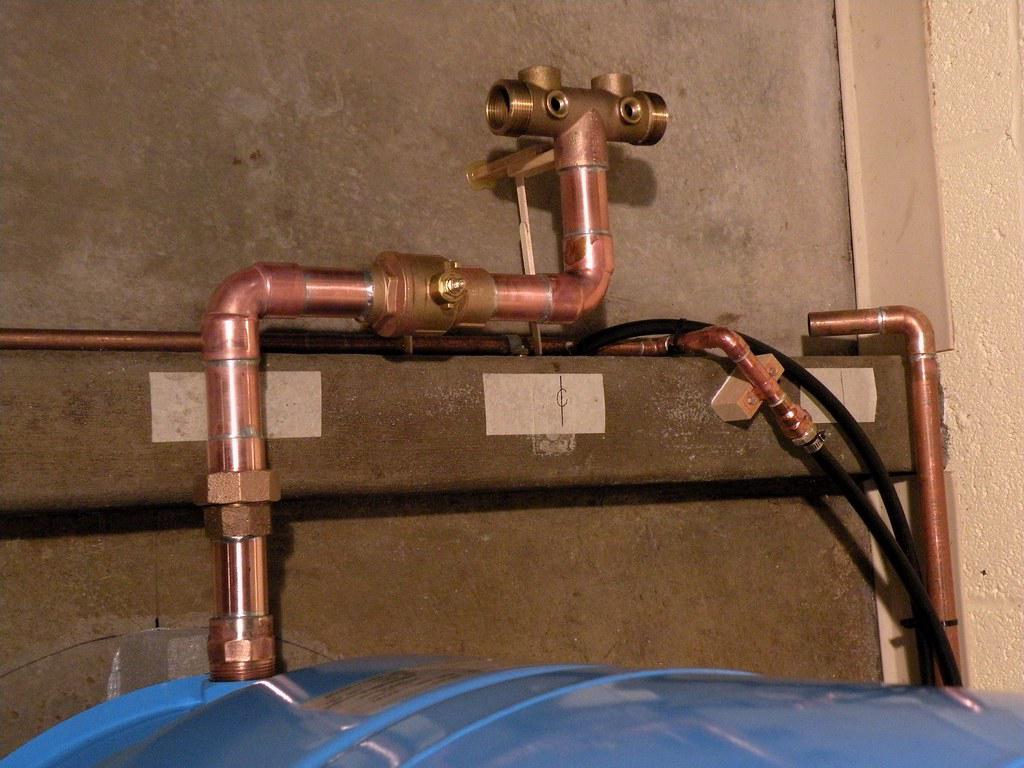
10. Upgrade Plumbing
When low water pressure seems persistent despite all your troubleshooting efforts, it might be time to consider upgrading your plumbing. Old or corroded pipes can significantly impact water flow, and switching over to more modern materials like PEX (cross-linked polyethylene) or copper can make a world of difference in restoring the optimal water pressure your home deserves.
Recognize the Signs: If you live in an older home, your plumbing system might still contain galvanized steel or iron pipes. Over time, these materials are prone to corrosion and rusting, which not only constricts water flow but can also cause leaks and other related issues. Look out for frequent leaks, discolored water, or significant drops in water pressure as signs that your pipes may be deteriorating and in need of an upgrade.
Advantages of PEX and Copper: Modernizing your plumbing with PEX or copper has numerous benefits. PEX is flexible, resistant to scale and chlorine, and less prone to leaking due to it being joined with mechanical fittings rather than soldered. Copper, on the other hand, is durable, can handle high water pressure, and is naturally resistant to bacteria. Both materials are excellent choices and can dramatically improve the efficiency and longevity of your plumbing system.
Assess the Scope: Re-piping an entire home is a significant project, but in some cases, you might only need to replace specific segments. Begin by evaluating which areas of your home experience the worst water pressure issues. Focus on high-use areas like the kitchen and bathrooms first. Sometimes, a partial upgrade can make a substantial impact without the need for a full re-piping job.
Hire a Professional: Upgrading plumbing isn't typically a DIY project. It requires expertise in planning, material selection, and precise installation to avoid damaging your home or creating future issues. A professional plumber can assess the condition of your existing pipes, recommend the best materials, and ensure the installation is up to code.
Minimize Disruption: Although upgrading plumbing can be a disruptive process, many modern techniques minimize inconvenience. For instance, PEX piping can be snaked through walls and foundations more easily than traditional rigid pipes, reducing invasive construction work. Discuss with your plumber how to minimize the impact on your daily life during the upgrade process.
Long-Term Savings: While the upfront cost of replacing old plumbing can be substantial, consider the long-term savings. Modern pipes are less likely to leak, corrode, or burst, which translates to lower repair costs down the road. Additionally, improved water pressure and flow efficiency can enhance the performance of water-using appliances and fixtures, potentially lowering your utility bills and extending the life of your water heater and other devices.
Maintenance and Future-Proofing: Once upgraded, your new plumbing system will require minimal maintenance. PEX, for example, is resistant to freezing and bursting, which is a great advantage in colder climates. Planning for future needs, like adding an extra bathroom or upgrading to high-efficiency appliances, can also be easier with a modern plumbing system.
Boost Home Value: Lastly, upgrading your home's plumbing can increase its overall value. Prospective buyers often see modern plumbing as a significant advantage, knowing they won't have to deal with the frequent repairs and issues that come with older systems. It's an investment that not only improves your daily life but also enhances your property's appeal and market value.1
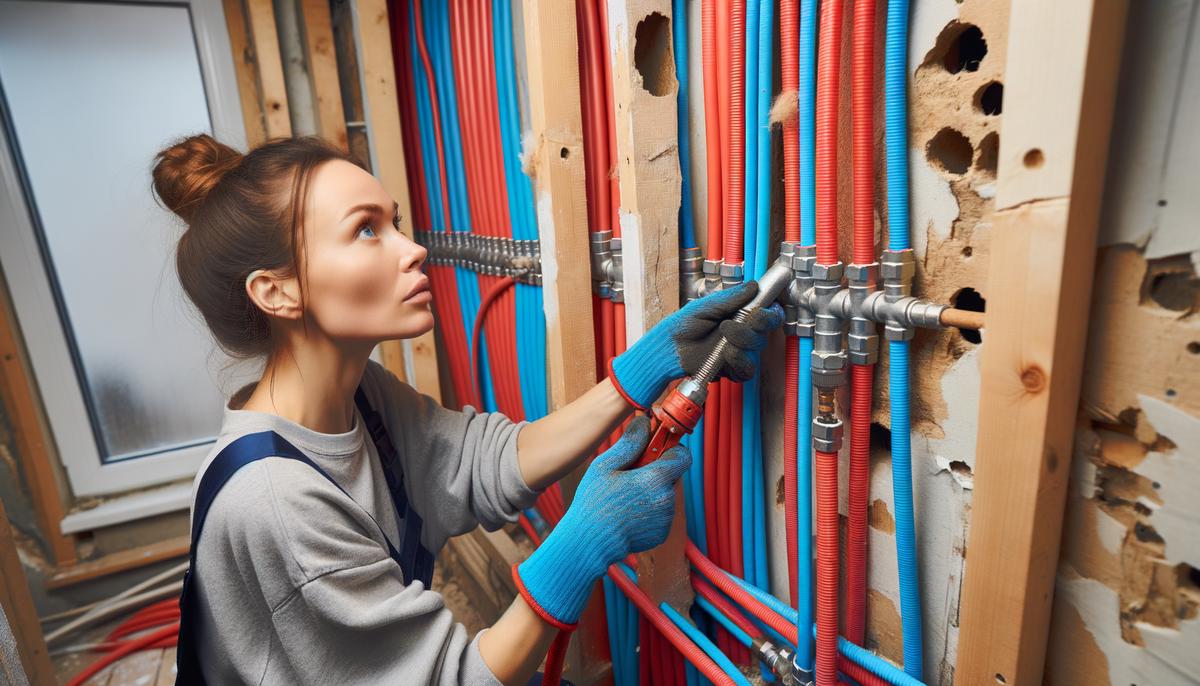
Writio: Your AI content writer for top-notch articles. This page was written by Writio
Leave a Reply